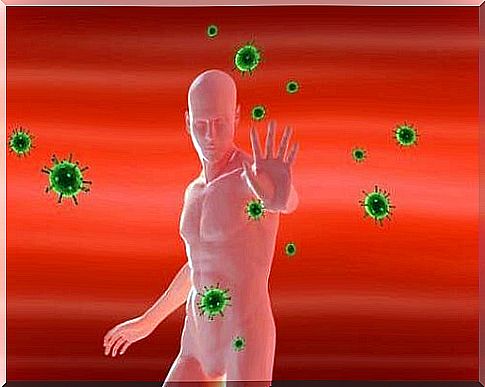Influenza Influence On The Body – Find Out The Details Of The Disease Process

Flu is a viral disease, especially during the fall and winter seasons. Many of us have had the flu more than once and we know from experience what the impact of flu on the body is. However, there are mechanisms that are activated against infection that are responsible for the symptoms that bother us.
The most common effects of influenza on the body are the classic symptoms. We suffer from fever, headache, muscle aches and fatigue. When flu evolves normally and without complications, all of these symptoms clear up on their own over time and have no sequelae.
But some cases of flu can lead to much more serious consequences. This happens after the virus has established itself in an organism weakened by immunosuppression. Also, patients in the very young or very elderly and in patients suffering from different primary disease, flu can even lead to death.
We must also make it clear that when we speak of flu, we are not referring to the common or even severe cold. Colds are much milder and lead to minor or only superficial consequences. However, the impact of the flu on the body looks completely different, because we are dealing with a greater degree of aggression.
The influenza virus also has social consequences. Four out of ten people with flu are away from work when they are sick. On the other hand, almost all of them stay at home for the maximum amount of time, limiting sports and social activity.
According to various studies, among the symptoms perceived by sick people, the feeling of fatigue is the most depressing. Almost half of the sick say that they spend their time in a state of lethargy or completely asleep. And although fatigue is the most irritating and attractive to patients, as we will see, it is caused by high fever and muscle aches. This symptom, in turn, is associated with tissue inflammation.
Influenza influence on the body – the process of infection under a microscope
The signs and symptoms you feel externally are a consequence of how the flu affects your body internally. Let’s try to put the flu processes under the microscope. Various mechanisms at the cellular level explain why we have a fever, headache, and muscle aches.
Once the flu virus enters the body, it knows it has about eight hours to replicate before it is detected by the human immune system. Its entrance door is the airway, from where the virus travels to the epithelial cells of the lungs. It settles and multiplies there.

By penetrating into human cells, the virus appropriates the organelles of protein-producing cells. He then makes these organelles work to his advantage. In other words, it uses what its host already has to reproduce and survive. The new copies of the virus then look for more cells to infect.
When a person’s immune system activates to fight the flu virus, several reactions are triggered. These are the reactions that ultimately trigger the known flu symptoms and explain how the flu affects the body.
The first activation of white blood cells to defend our body. These cells will constitute the first line for the subsequent activation of inflammatory mediators called cytokines.
Cytokines can be imagined as little hormones that carry a message in the immune system. Their mission is to activate organs and tissues in order to eliminate the virus from the body as quickly as possible.
Influenza influence on the body: fever
When it comes to the effects of flu on the body, we must inevitably refer to fever. Real infection with the flu virus always causes fever, which is one of its hallmark symptoms.
Fever occurs when the hypothalamus commands the body temperature to rise. This order is given because the hypothalamus perceives the presence of substances we call pyrogens. Among the pyrogenic substances we have components of bacteria, viruses and cytokines themselves.
With an elevated body temperature, our white blood cells become more effective. In fact, fever is therefore a defense mechanism and not a pathological consequence of the disease. In addition, at high temperatures, microorganisms have difficulty reproducing.
Influence on the body: headache
The process explaining how the flu causes our headaches is not entirely clear. It is understood that a headache is a logical consequence of a fever. This symptom occurs not only with flu infection.

Cytokines are also associated with headache. One of them in particular, called interleukin-1. It belongs to the group of inflammatory cytokines, like interferon.
Both cytokines and increased temperature lead to vasodilation. On the other hand, when the vessels enlarge, the increased blood flow may explain the headache through an internal mechanism similar to that which explains the occurrence of migraine.
How the flu affects the body: muscle aches
Finally, muscle aches are also a common symptom of the flu. Scientific research has found a genetic explanation for this flu-like muscle pain. And of course, it is also related to the action of cytokines.
During infection, our body increases the expression of certain genes that promote the destruction of myocytes. Myocytes are cells of muscle tissue.
At the same time, inflammatory cytokines cause inflammation in the muscles to fight the virus. Inflammation of the muscles is painful and exhausts them as cellular resources are mobilized to fight the virus. This is where the great fatigue reported by flu sufferers comes from.
To sum up
We know a lot about the mechanisms that explain the effects of flu on the body, but there is still much to be explored. The truth is that when we get a flu infection, we get fever, headache and muscle aches.
Symptoms show that our immune system is fighting the virus. During this time, we must do everything possible to speed up this process, ensuring the body has adequate rest and timely medical consultations.









